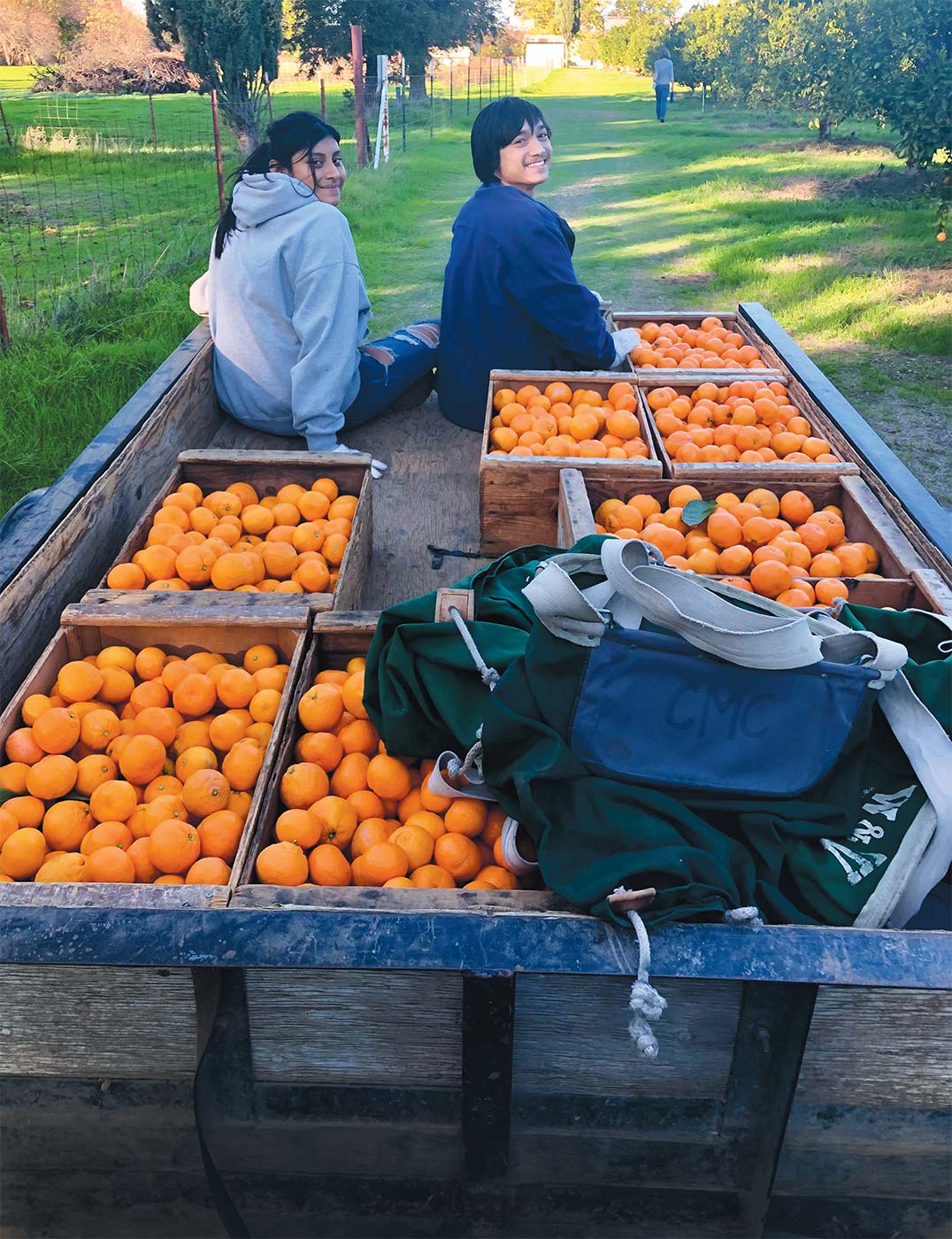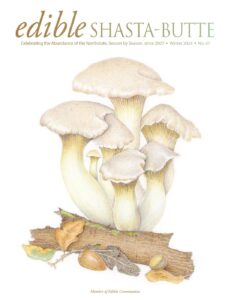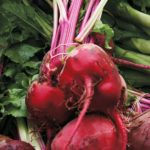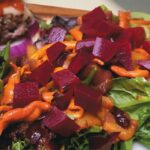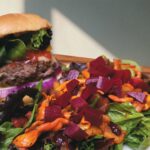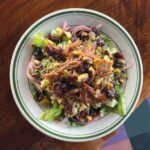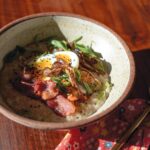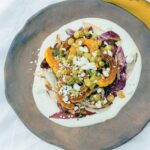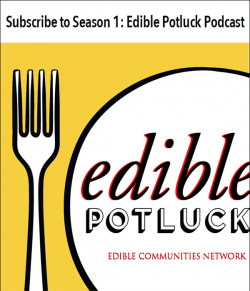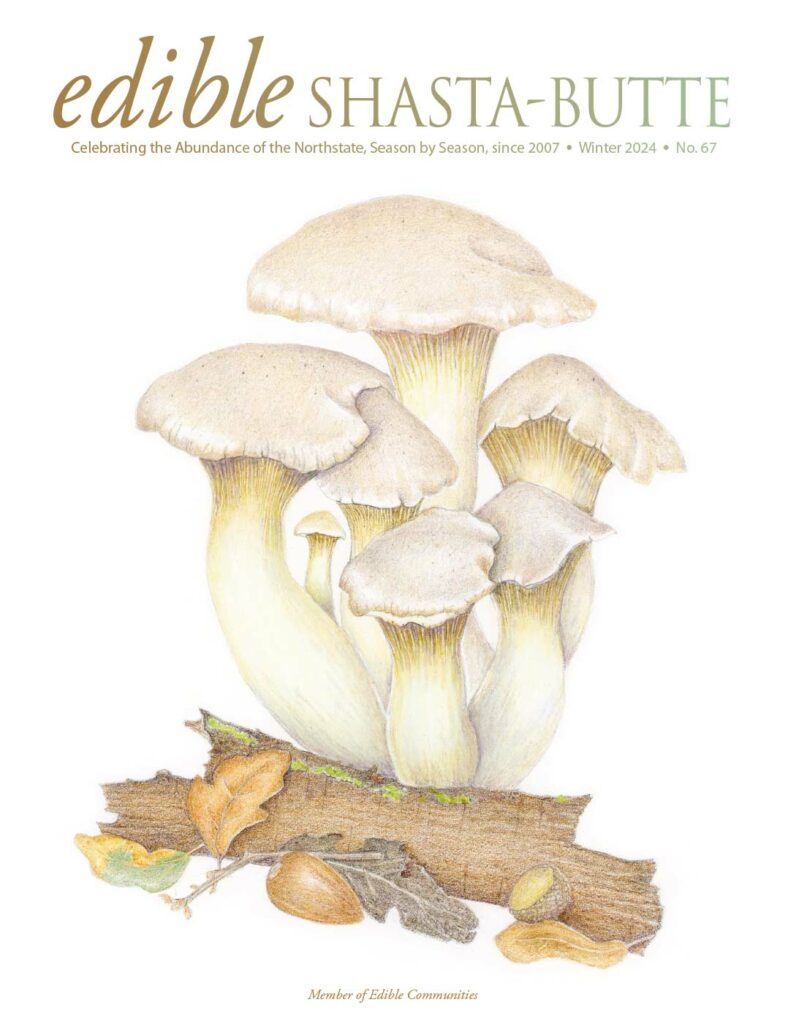
Grist for the Mill
This month, I feel the winter solstice the way some must have felt it hundreds of years ago: a bewildering loss because days shorten coexisting with a sure hope as daylight returns.
This issue of Edible Shasta-Butte brings you the last installment of the four-part series by father and son farmers Bruce and Chrisopher Lopes. I’m going to miss the father’s chatty stories and the son’s analytical scrutiny. Perhaps, as with me over the past year, they introduced you to duck rice farming, a practice from Japan they implemented on their organic rice farm, and you came to appreciate how the method can revolutionize rice farming here—and save water, control weeds, and fertilize rice fields at critical points in the growing season. Perhaps Bruce Lopes charmed you when he described the ways the ducks delighted him, as he taught them to apply in his rice fields what, by nature, they do best. Behind the scenes, here in the Edible Shasta-Butte control center, dozens of texts, phone calls, edits, and margin comments clarified and tightened what they wrote each issue. I bid them a fond farewell—though I’ve extracted an invitation, when it comes time, to taste the sake made in San Francisco from the heritage Omachi rice the Lopes harvested this November.
When I visited Parasol Mycology for this issue, Dave Konyndyk and Carissa Garrard greeted me with a cup of cordyceps militaris tea, a bright golden beverage steaming in a big white cup. Konyndyk studied physics, and he keeps their mushroom shed as insulated and sanitized as the most particular of science labs, quality control for their organic mushrooms. The couple like cordyceps tea and extract for enhancing their focus; Gerrard has noticed a reduction in inflammation, as well. Rachel Trachten’s article on Parasol Mycology presents this new business, one of the phoenixes arising in Paradise after the Camp Fire five years ago.
This Winter issue of Edible Shasta-Butte enters with these stories and more, when the sun is low in the southern sky, and it lingers for you as the days grow long into spring. Enjoy it—and them.
Candace Byrne
Editor & Publisher
Edible Shasta-Butte
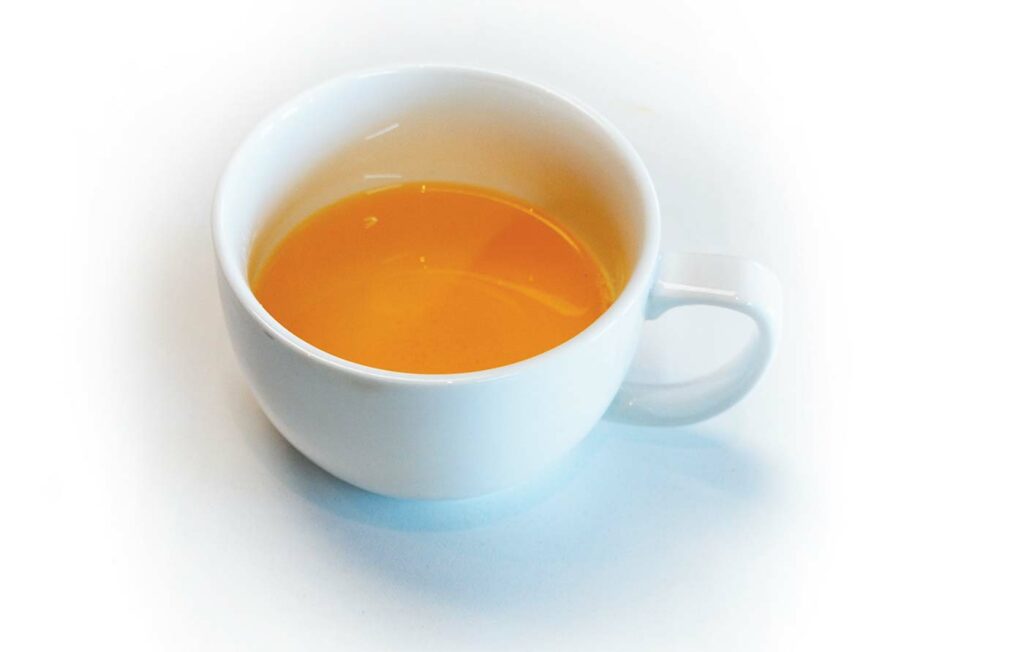
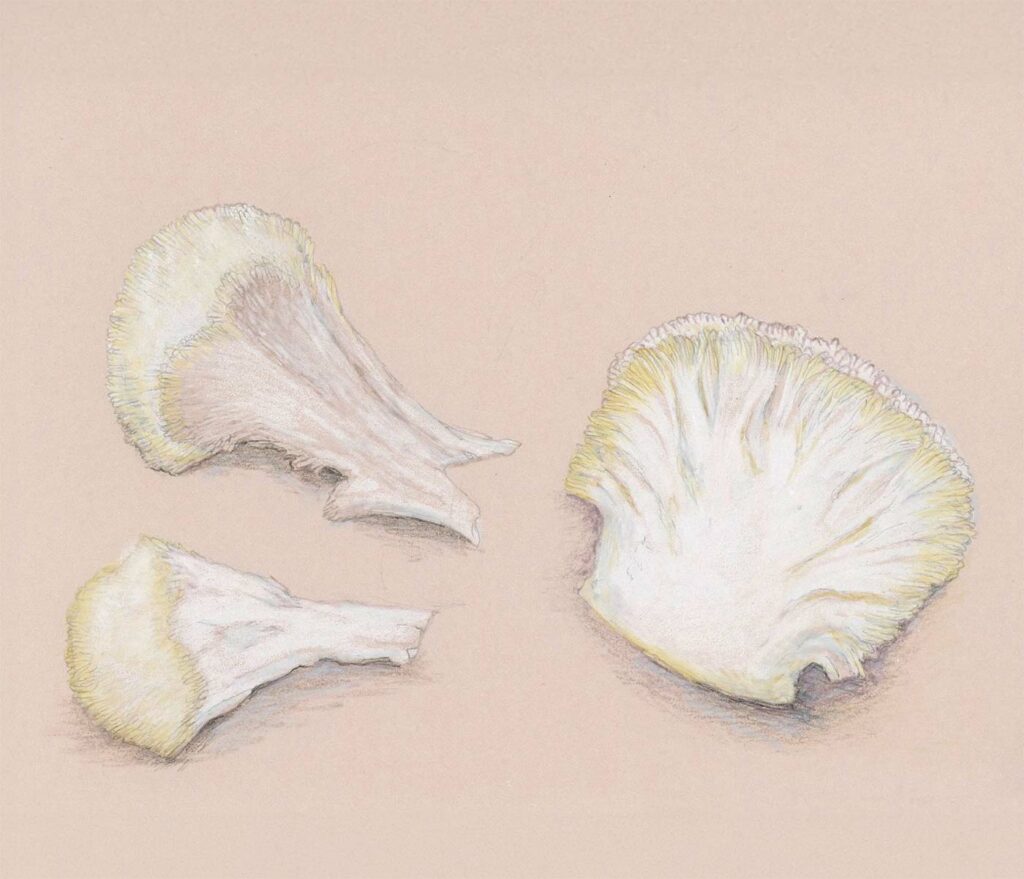
On the Cover and this page
Susan Lofthouse Meade is a botanical artist who lives in Redding. For this winter’s cover, Susan visited the Redding farmers market and Branden and Julie Lisea of Clay Farms, who sell mushrooms there. Among their many offerings, Susan found inspiration for her drawings of King Trumpet oyster mushroom on the cover (cap diameter about 3.5 inches) and Lion’s Mane mushrooms on this page. For both, Susan used watercolor and colored pencil. You can see more of her artwork at splofthouse.wixsite.com/botanical-art.
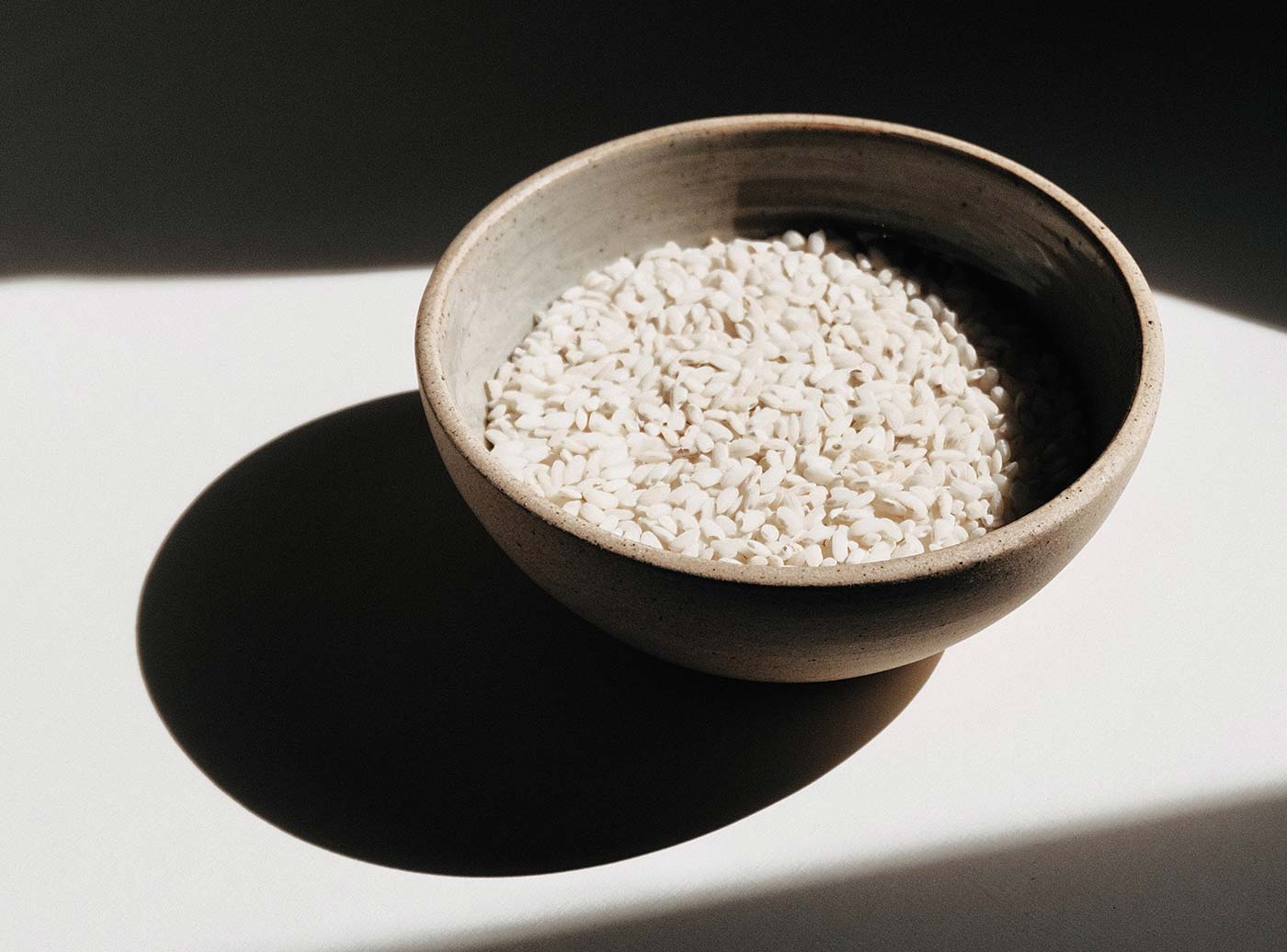
Braised Duck on a Bed of Jeweled Rice
To cook a duck and make this salad, Chico chef Emily Porter provides the way.
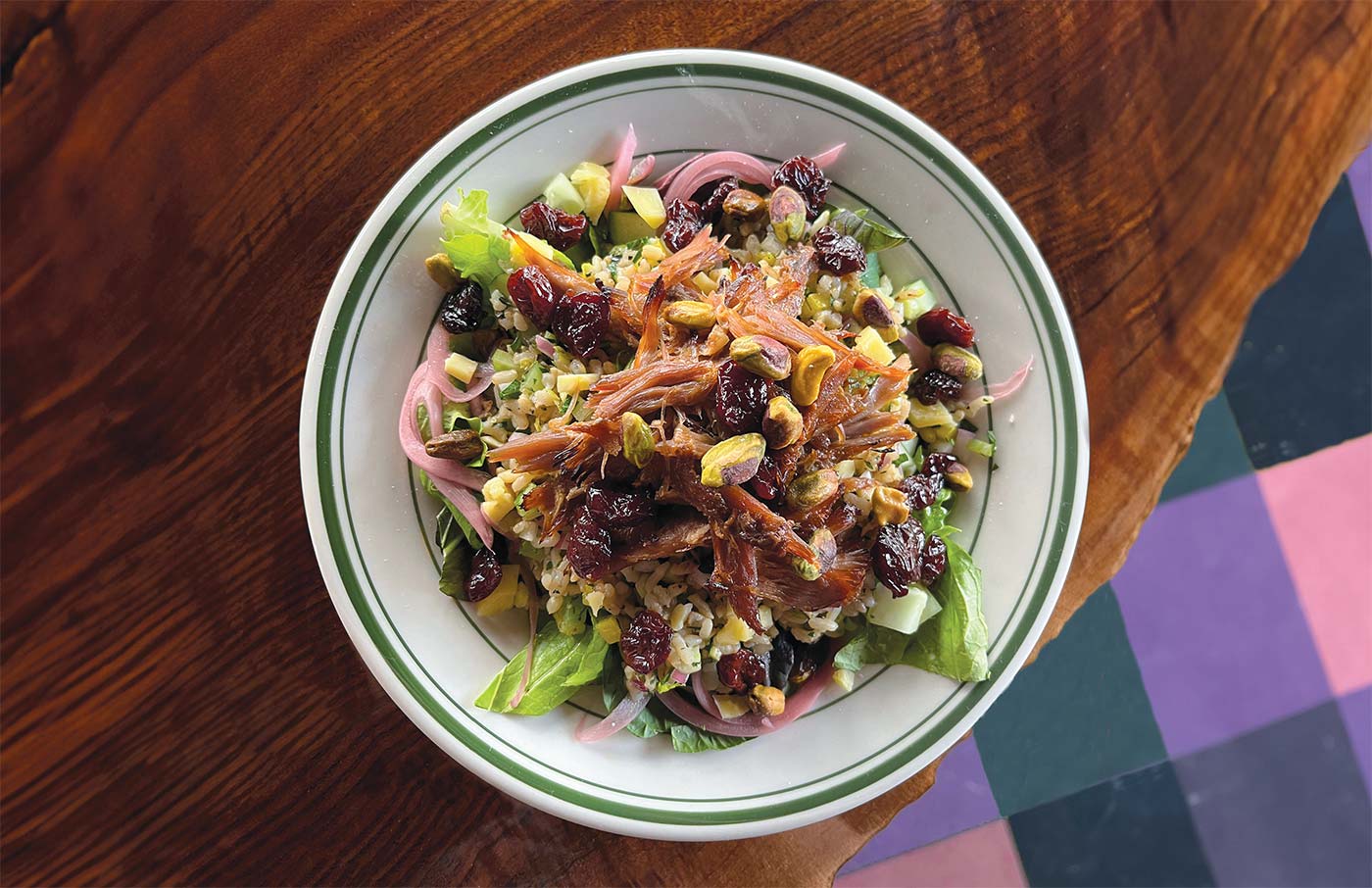

Find Local Farms—and Eat!
How local residents can easily find local farms and ranches from which to purchase local foods.
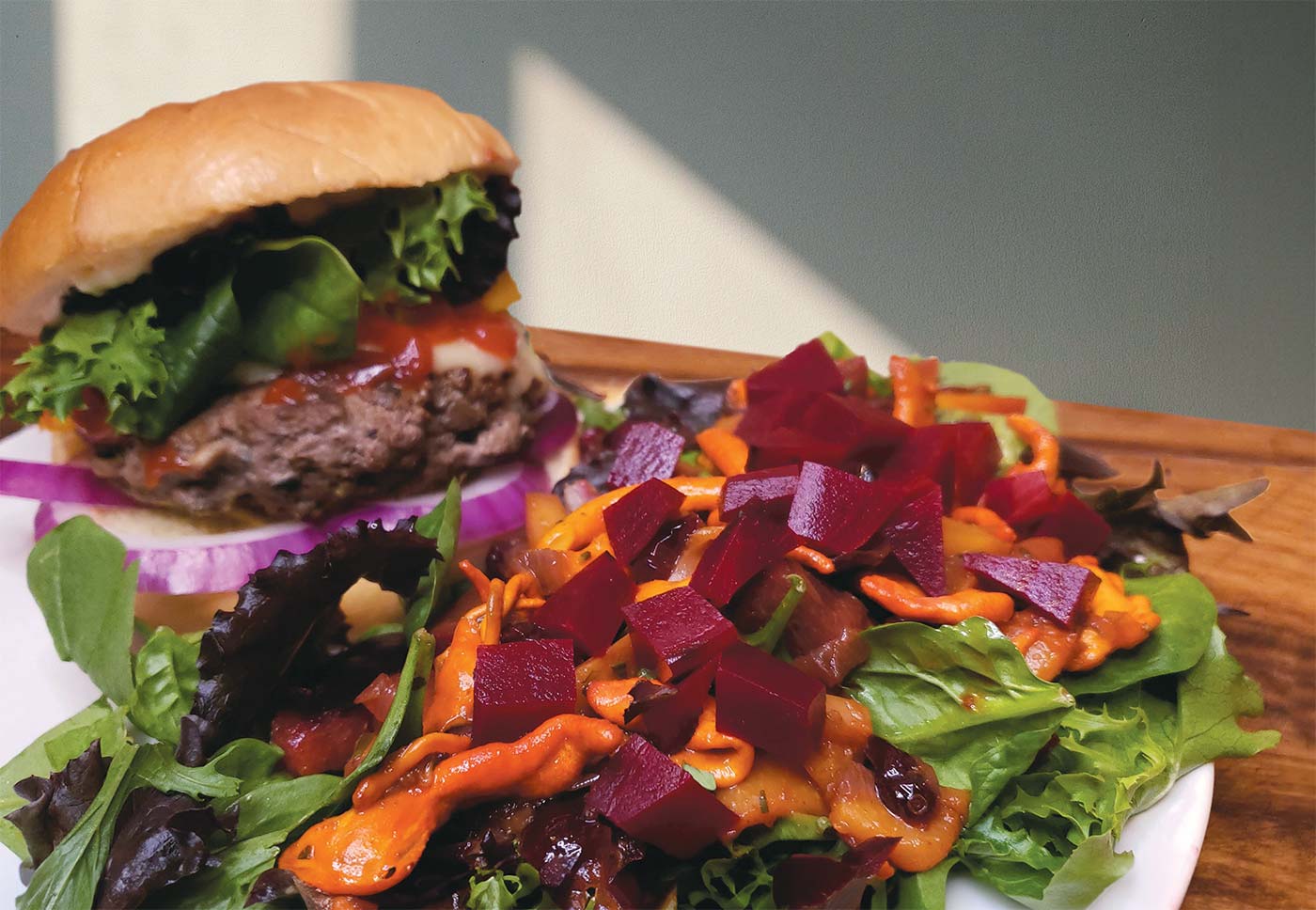
Half-Shroom Burgers
Cutting your ground beef with cooked mushrooms is a great way to stretch your supply, add flavor, and eat less red meat.

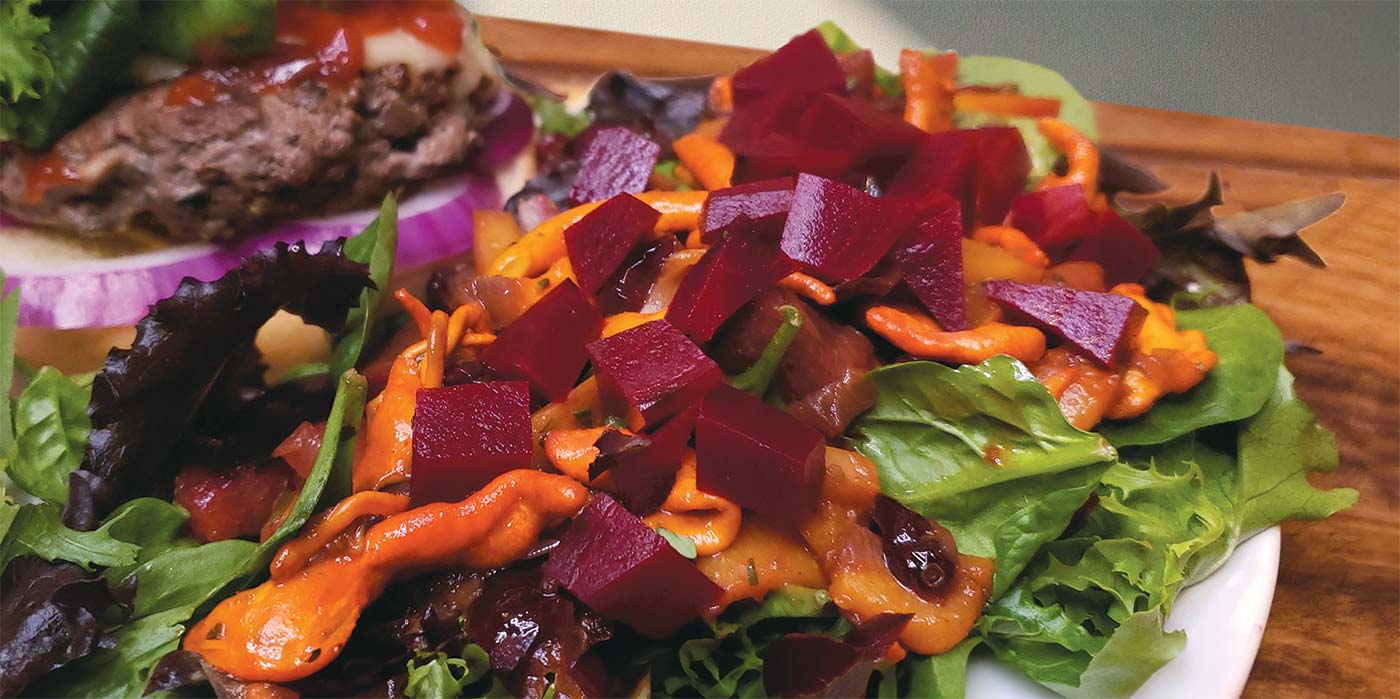

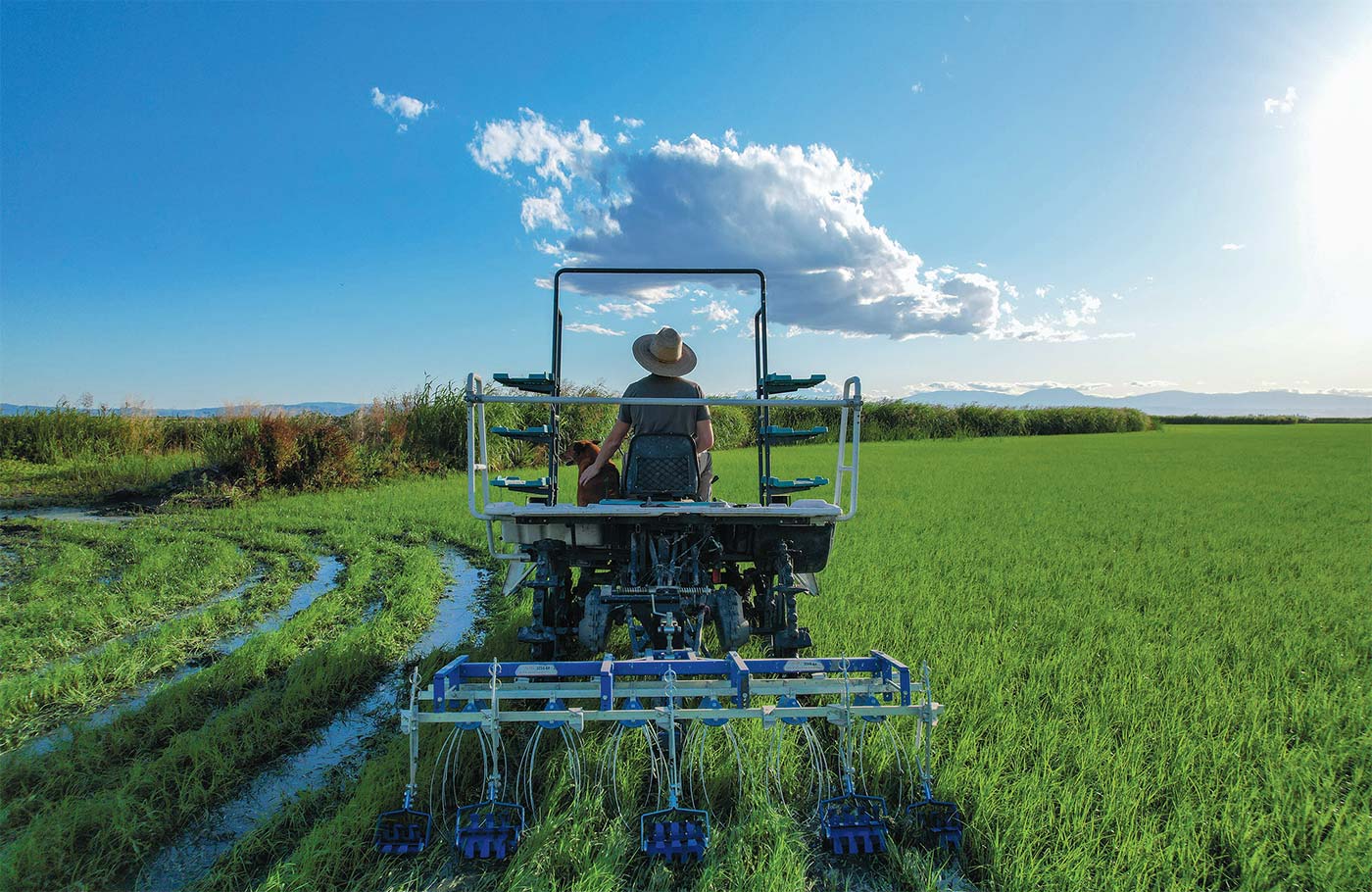
Winter Reflections and Future Directions on Lopes Family Farms
Determination, exploration, and perseverance echoes in our new venture.
